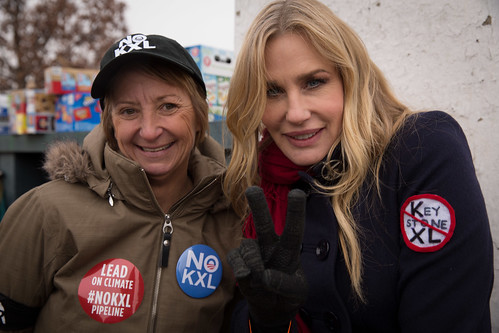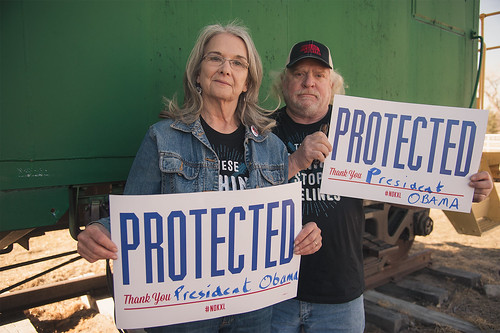“Keystone XL Campaign: Lessons from Behind the Scenes” is a piece below that Kenny Bruno shared with me recently. His reflections are worth getting a cup of coffee and taking in the long read. No one will capture everyone’s individual experience working to stop Keystone XL, because each person came from a different place and a different perspective. The beautiful thing about this unlikely alliance that beat the Big Oil industry is despite differences of geography, party affiliation, or culture, we came together with unshakable solidarity.


Keystone XL Campaign: Lessons from Behind the Scenes
By: Kenny Bruno
The Keystone XL pipeline, according to one of the world’s foremost oil industry experts, is “probably the most famous pipeline in the history of the world, and it hasn’t even been built…” It was the target of the largest acts of civil disobedience around an environmental cause in decades. Fifteen Native Americans rode on horseback for about 350 miles of the route. Another native organizer drove the entire US portion of the route at least twice, and had a vision that it would be rejected. Tribal leaders petitioned President Obama to reject it, and presented an anti-Keystone tipi in his honor as a gift to the Smithsonian Museum of the American Indian. In Texas, two protestors locked themselves inside the pipe and others lived in trees above it for over two months. Politico ran hundreds of articles mentioning the pipeline, per year. Willie Nelson and Neil Young sang in opposition to it. Mary Landrieu unsuccessfully staked her Senate career on it and Mitch McConnell made it the first priority of the 114th Congress.
What are the lessons of this epic, underdog environmental campaign?
Take on the most destructive project on earth, whether the odds are in your favor or not.
In 2008 a group of philanthropists and environmental campaigners, were trying to figure out how to restrain the rapid and reckless expansion of the tar sands industry in Alberta, which Environmental Defence Canada had dubbed the Most Destructive Project on Earth. We set up an informal group of advisors from Canada and the US, all dedicated to reforming and restraining this industry. Our analysis showed that Keystone XL, more than any other project, would spur its growth and profitability. We chose Keystone XL not because it was a likely success but because we had no choice. Keystone was always a worthy campaign, but the catch was we were probably going to lose. Our adversaries were the Government of Alberta, Government of Canada, the most powerful industry on earth, the entire Republican Party and about half the Democrats. That’s why the second part of the lesson is make sure you are building the movement even if you lose.
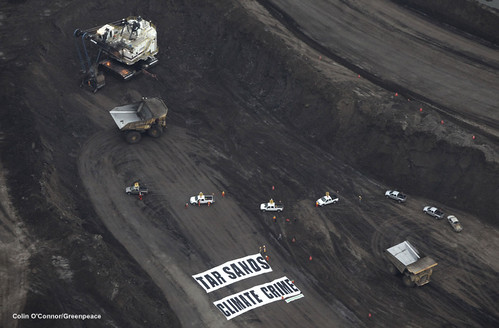

Listen to your critics, but not too much.
Writers normally sympathetic to climate action, like dot earth’s Andrew Revkin, Bush-hater Jonathan Chait and even Earth Island Journal scolded us for choosing the wrong campaign. A senior lobbyist for a major green group walked out of a strategy meeting muttering, “this town [Washington, DC] will never reject oil from Canada.” We were called dumb, destructive, well meaning but missing the point, preposterous, and more. Our most vicious critics thought we were crazy, and sympathetic critics felt we were losers. But we weren’t trying to predict the future; we were trying to change it.


Sometimes you have to forget “framing” and just have a good old-fashioned debate.
Many of us were taken aback by the pro-Keystone militancy and even bullying of the construction trades, particularly LiUNA. We received advice not to engage in discussion about jobs, because it wasn’t our “frame.” Yet the Cornell Global Labor Institute’s report revealing that KXL would create relatively few jobs eventually broke through to President Obama. He repeatedly stressed that point when putting the meager benefits of KXL in context of the national interest. Similarly, “energy security” was our adversaries’ “frame,” and they had a great sound bite: “Every barrel of oil from Canada is one less barrel from countries that don’t like us.” But when Oil Change International revealed that much of the oil from KXL would ultimately be exported as refined product, we recruited allies like Ed Markey and Nancy Pelosi to our cause.
In his address rejecting the pipeline, President Obama mentioned that KXL would not improve energy security. Score another for debating, not just framing.
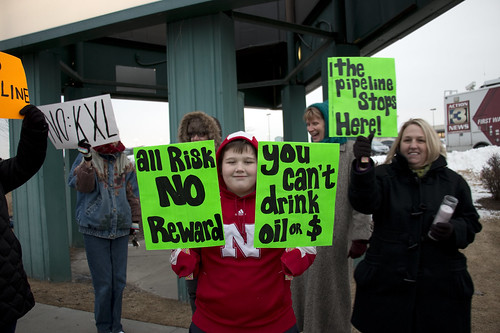

Delay Is A Friend.
When we started work on KXL, virtually no one in the US had even heard of it. During the period when the issue was too obscure to make political headlines, we had to work through the bureaucracy. We divided up the alphabet soup of agencies and pressed them to recognize the risks of KXL. One of those agencies, the EPA, gave the environmental study a failing grade in early 2010, giving us a precious year in which to organize. This is a wonk’s work, and it was done with smarts and passion by groups like NRDC and the Sierra Club. Had it not been for the EPA, Keystone XL would have been permitted and built before Bill McKibben even heard of it.
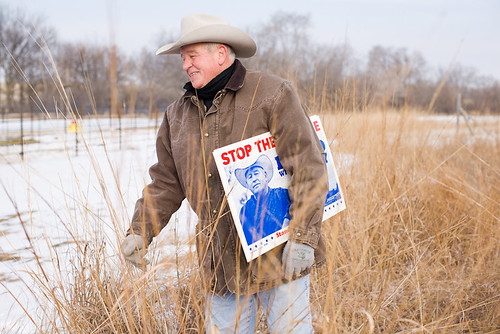

When Bill McKibben calls you to battle, put your boots on.
After fighting the issue’s obscurity for nearly three years, we craved political attention, yet many of us were skeptical that the issue would inspire hundreds of people to get busted. That’s because we underestimated Bill McKibben’s convening power and ability to articulate the issue in way that touched the average, grassroots climate activist.
The key was that James Hansen, one of the leading climate scientists in the world, had come out back in February 2009, on the eve of President Obama first foreign trip, to Canada, saying that tar sands “cannot be developed” if we are to avoid the catastrophic consequences of climate change. Hansen’s insight led to McKibben’s focus in Keystone XL, as he was looking for ways to rejuvenate a climate movement that was depressed after the defeat of cap and trade legislation. The White House sit-ins organized by McKibben in August 2011 were the turning point in the campaign, the moment when Bill taught us we could mobilize and motivate thousands of people on this effort.


Jane Kleeb is “tougher than a rusty nail” and so are a whole bunch of farmers and ranchers.
The Keystone campaign as we know it would not have existed without Jane Kleeb, the hard charging and feisty organizer from Nebraska. A progressive, Jane won the trust of conservative landowners along the route, and they in turn made Governor Heineman and Senator Johanns opponents of the original route. When the route changed they flipped, but the landowners did not. TransCanada erred mightily in trying to bully and mislead Nebraskans into thinking the new route was safe. And the company was unlucky that Jane and the landowners were there to call them on their BS. The risks to water and agriculture in the heartland became a landing place for the President to delay, and later reject, the pipeline. Thanks to the incredible tenacity of Nebraskans, there has never been an unchallenged viable route through the state for TransCanada.


Tribal Nations Are Rising Up.
The Keystone Campaign started with a cry for help from Alberta, where small First Nation communities were facing disastrous contamination from a monumental and wealthy industry. The earliest legal challenge to Keystone I, which is already built, was from tribes in the Dakotas. Marty Cobenais, a tribal organizer with Indigenous Environmental Network traveled up and down the route calling attention to Keystone XL in South Dakota and Oklahoma. Later, some of the tribal activists joined with Nebraska landowners to revive the Cowboys and Indians Alliance (CIA). Their “Reject and Protect” Encampment in Washington was spiritually and visually powerful. These kinds of uprisings are taking place all over Indian country, and in Canada with the Idle No More movement.
-

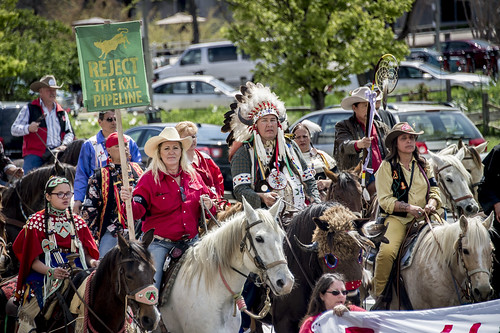
Photo by Karen Kasmauski / iLCP for Bold Nebraska. Farmers, ranchers, Tribal Nations and First Nations came together as the Cowboy and Indian Alliance for a week long series of events called Reject and Protect in DC, April 2014.
Strange Bedfellows Have Fun and Win.
The KXL campaign was comprised of an incredibly diverse coalition, including tribal nations, traditional tribal leaders, ranchers and farmers, students, and youth, Big Green groups, not-so-big green groups, tiny grassroots community groups, wealthy political donors, scientists, labor leaders and intellectuals. The President was hearing the same thing from students, from big party donors, and from grassroots activists with banners along his motorcades routes: “Keystone is a climate issue.” Native and non-native landowners got to know each other and deal with each other as equals along the route. It’s also worth saying that at no point did the “Big Green” groups float a deal, sell out the grass roots, or work toward a compromise, despite many predictions that they would – or should – do so.
In a genuine alliance, the big groups remain accountable to the small ones, and vice versa.


Make it political and let your adversaries overreach. And if you win, prepare for backlash.
The Keystone campaign was doomed if it stayed in the realm of bureaucrats at the State Department. We had to make it political, but it was the GOP that made KXL a top tier issue in the media. Keystone XL’s fate was in the hands of a fascinating character- the President of the United States. Because KXL needed a Presidential Permit, we were able to focus attention on what Barack Obama would decide. One year before Election Day 2012, in an act of friendly militance, we gave the White House a literal hug, as 12,000 people surrounded 1600 Pennsylvania Ave. That led to the President’s announced of a long delay to study the Nebraska route.
As it turned out the Republicans were even more enthusiastic than we were about making Keystone political. Conservatives licked their chops, thinking it was a winning Presidential campaign issue for them. When Congress passed a bill forcing the President to decide, it backfired as Obama rejected the permit. Then came enormous backlash and pressure, around an issue that the Administration felt ambivalent about. Candidate Obama traveled to Oklahoma in March 2012 to give his imprimatur to the southern leg of the suddenly segmented KXL pipeline. After the segmentation, with virtually all elected officials opposing us, we were left without a path to victory on the southern leg. This was the low point of the campaign, when David Daniel, who should be the patron saint of pipeline fighters around the country, Julia Trigg Crawford and the other good people along the southern route saw their land taken by TransCanada, with the Texas courts standing by and nodding their approval.
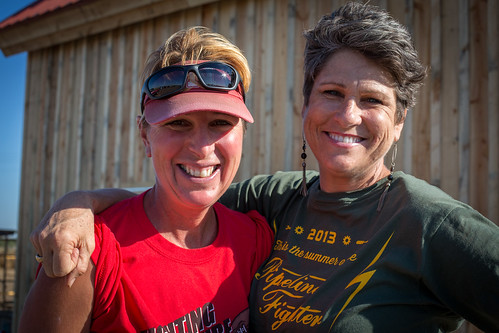

Keystone is Subtantive AND Symbolic.
One of the common critiques of the Keystone XL campaign has been that the pipeline is symbolic, that it isn’t as important as either the proponents or opponents claimed.
Sometimes a pipeline is just a pipeline, but Keystone XL is both substantive and symbolic.
Every pro-tar sands analyst in Canada says that Keystone XL matters, materially, to the industry. It’s part of the system, the extracts and ultimately burns this dirtiest and most expensive of oils.
Over its lifetime Keystone XL would have unlocked millions of barrels of tar sands crude, and hundred of millions of tons of carbon emissions. Those are real emissions, not symbolic ones. It is also true that it became a symbol of the fight for climate change. The debate hosted an intellectual skirmish about the lock-in potential of infrastructure and a surrogate test for the will power to stand up to fossil fuel interests.
The Keystone XL campaign became much bigger than anyone ever expected, taking huge amounts of time and energy (though not huge amounts of money). Obviously we can’t spend Keystone levels of time and energy fighting over every single pipeline. Then again, why did civil rights activists risk their lives at Woolworth lunch counters in Greensboro when there were so many other racial injustices affecting more lives even more profoundly? As Taylor Branch wrote in his biography of Martin Luther King, Jr., in the first weeks after Rosa Parks refused to give up her seat “only the rarest and most peculiar of people saw historical possibilities” in the Montgomery bus boycott. This is not to compare the Keystone XL campaign to Montgomery, but just to say that you never know what will happen when you take a stand and stick it out. Nothing is guaranteed, but you just might inspire people to take the battle to even bigger fronts.
No single campaign fully addresses a problem like climate, which touches almost every facet of society. It is as part of a movement that a campaign like Keystone finds its full meaning. If Keystone XL is stopped but coal and oil consumption rise and the tar sands industry expands, that would be an empty victory. If the Keystone campaign has raised awareness about the threat of tar sands and slowed its expansion (and the evidence is that it has), then we did the job we set out to do. If we have recruited the President of the United States to our cause, and he can start recruiting other world leaders to it, that is more than we hoped for. If we can look back at the Keystone XL campaign as part of inspiring an American movement to confront and eventually reverse climate change, then it will have been worth every second of this hard fought, seven-year campaign.


Written by: Kenny Bruno is the Coordinator of the Moving Beyond Oil Campaign. Kenny Bruno has been an organizer in the environmental and human rights movements for over 25 years. He is the co-author of three books: Greenwash: the Reality Behind Corporate Environmentalism; EarthSummit.biz: The Corporate Takeover of Sustainable Development; and Josie and the Fourth Grade Bike Brigade. He is also co-founder of two schools for training of indigenous leaders in environment and human rights, one in Ecuador and one in Peru. He worked on the Keystone XL campaign since the very beginning, starting in November 2008, coordinating among various parts of our unlikely alliance, from communities to large NGOs to donors.
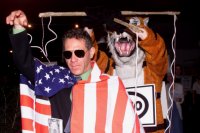

Note from Editor, Jane Kleeb: I first met Kenny Bruno in person when Nebraskans traveled to Washington, DC to answer the call from Bill McKibben back in 2011. Bill wrote a deeply moving letter asking everyone to arrive at the President’s door step to show him the faces fighting the risky Keystone XL pipeline. Kenny talks and moves fast. So, we instantly hit it off. Like Bill McKibben, Kenny was a seasoned campaigner who never lost sight of what it feels like to be on the front lines of a tough grassroots campaign. Kenny traveled to Nebraska several times, visiting with farmers, ranchers and native allies. He made sure Bold Nebraska was integrated at the highest level of strategy. Kenny never viewed us as window dressing. He viewed as equals at the table of key leaders from national groups where we all proved our contributions of stopping Keystone XL every single day. Kenny’s treatment of us was no surprise given his background of helping founding two schools for training of indigenous leaders in environment and human rights and driving boats to hang banners in his Greenpeace days. Thank you Kenny for leading the campaign against Keystone XL. The phone calls, the white papers, the wrangling, the presentations to donors were all worth it because together we did the impossible. We stopped Keystone XL protecting the land and the water…and drew a line in the sand(hills) on climate action.


